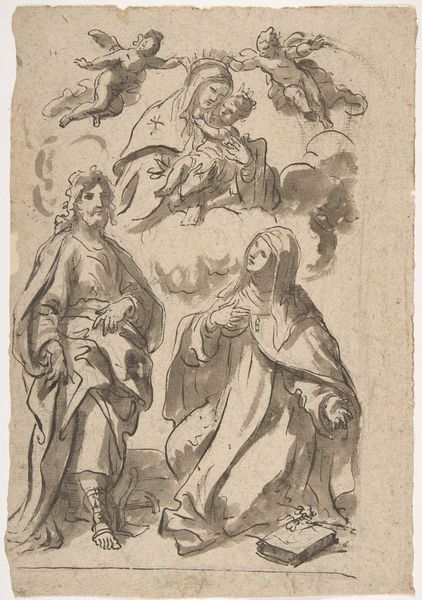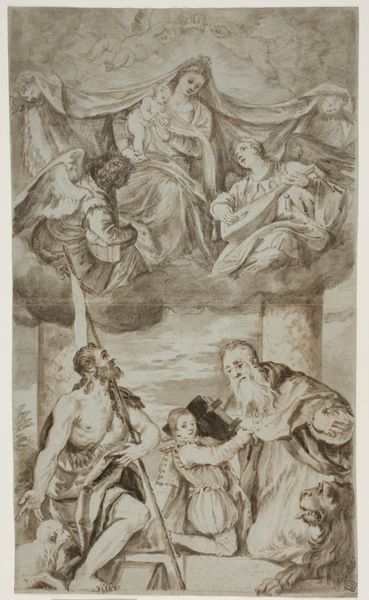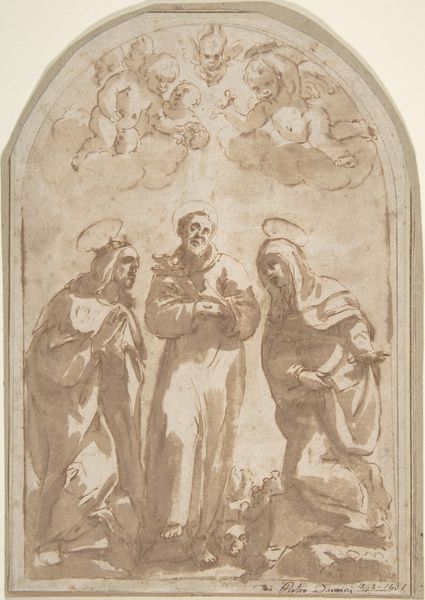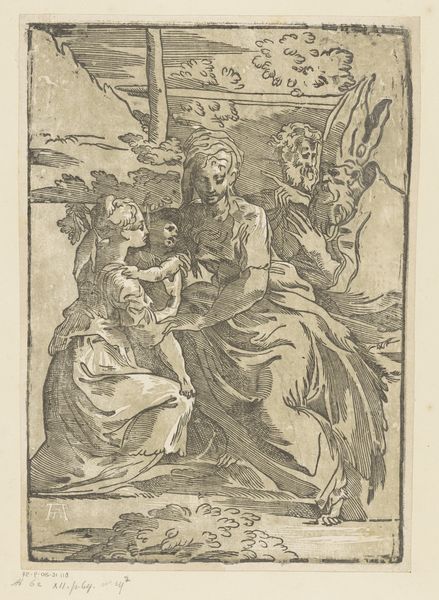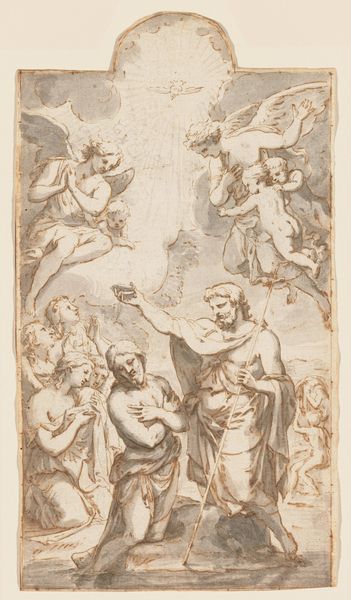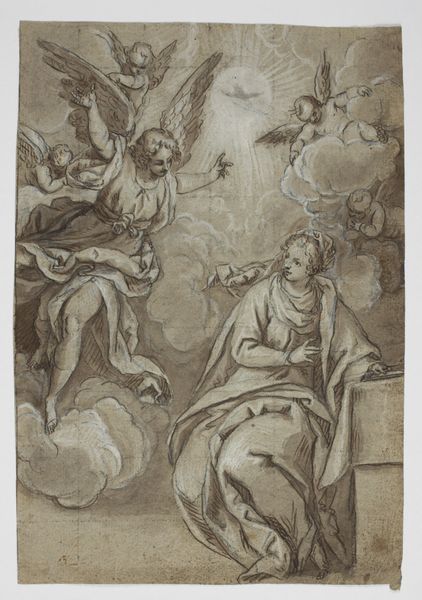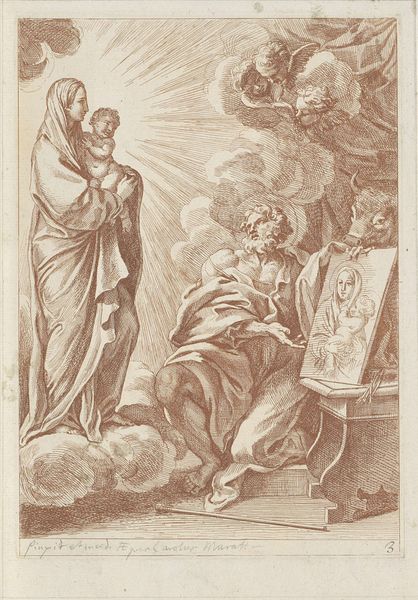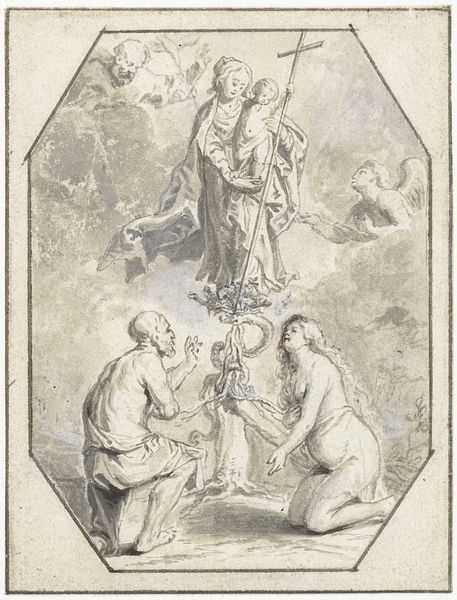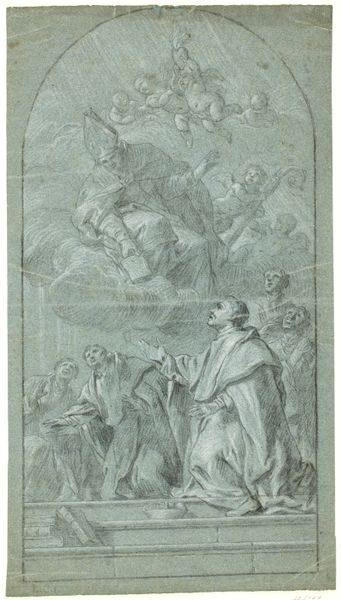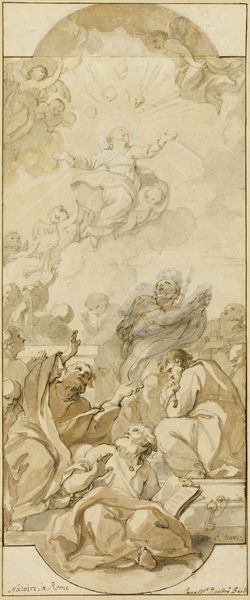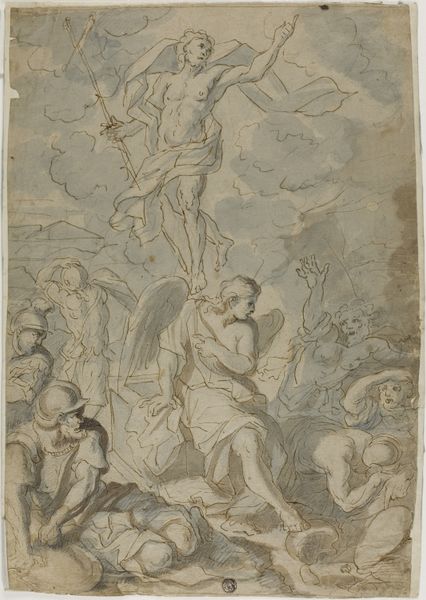
The Virgin and Child with Saint John the Baptist, Pope Saint Dionysius, Filippo Neri and a Male Saint 1615 - 1625
0:00
0:00
drawing, coloured-pencil, print, pencil
#
portrait
#
drawing
#
coloured-pencil
# print
#
figuration
#
pencil drawing
#
coloured pencil
#
pencil
#
history-painting
#
italian-renaissance
Dimensions: 9 13/16 x 5 1/4in. (24.9 x 13.4cm)
Copyright: Public Domain
Editor: This drawing, "The Virgin and Child with Saint John the Baptist, Pope Saint Dionysius, Filippo Neri and a Male Saint" by Baccio Ciarpi, created sometime between 1615 and 1625, presents a gathering of figures in pencil and colored pencil. The initial feeling I get is almost like I’m viewing a stage play. It feels very carefully constructed, but what is the narrative Ciarpi is presenting? Curator: That’s an interesting starting point! It certainly has a theatrical feel, doesn't it? Given the artist's context and the era it was produced, how might the depiction of these figures - the Virgin and Child elevated above these saints - reinforce the authority and the role of the Church in society at the time? Editor: I see what you mean. It's like the earthly figures are witnesses to the divine, which emphasizes the Church's importance as an intermediary. What about the medium of drawing itself? Was there something significant about creating a piece like this as a drawing versus, say, a painting? Curator: The choice of drawing is fascinating. Drawings often served as preparatory studies for larger works, so perhaps this was a sketch for a grander commission, displaying Ciarpi’s inventive skills and ability to visually communicate with potential patrons. Consider the social currency involved - a skillfully executed drawing could act as a kind of visual resume, no? Editor: That's a perspective I hadn't considered. It almost democratizes the process – a drawing can be shared and reviewed more easily. I initially thought it was purely an artistic statement, but the idea of its being a marketing tool adds a new layer. Curator: Precisely. Art doesn’t exist in a vacuum. Understanding its socio-political and institutional context allows us to really see the layered meanings embedded within it. It also begs the question of what public value and political message a religious artwork could present in modern society? Editor: That’s given me so much to think about, not just about this specific artwork but how I approach analyzing art in general!
Comments
No comments
Be the first to comment and join the conversation on the ultimate creative platform.
